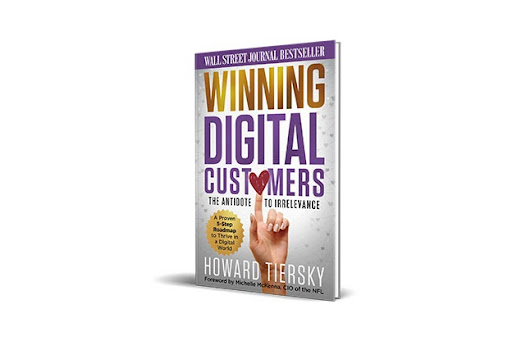Insights | By Howard Tiersky
The Best Way to Pitch Ideas
Pitching big ideas can feel daunting and it’s very common for people to take the logical approach–this is the idea, here is how we will execute it, here are the numbers, I promise we will meet them, please approve this.
While it can get you some positive results, there’s another way you can increase your chances of getting that sweet approval without putting in a ton of extra effort.
It’s called storytelling.
Large, ambitious projects are full of risk and they’re never guaranteed. While you need a rational argument, appealing to the emotions of decision makers is equally if not more important.
What can they accomplish if the project succeeds? How will it change the way your customers behave? What kind of glory awaits them on the other side?
There’s no better way to paint that picture than through storytelling. This article will present you with a storytelling outline that you can use for any kind of pitch.

ESTABLISH THE STORY
Every story has a hero, a goal, someone or something standing in the way of that goal, some kind of way to overcome the obstacle, and some sort of payoff.
Start by building the world of the story, establish the characters, and narrate the current situation. Be descriptive.
You could say something like this: “We have a loyal following of clients, but our customer base has been shrinking in recent years.”
This is just one concise way you can establish the setting for your story.

INTRODUCE THE PROBLEM
Make it clear that there is a problem. This triggers the survival instincts of the brain.
Saying something like: “our competitors are doing this” or “our research data shows that our customers now vastly prefer that…” or “we can see that the sales figures are clearly declining…” are great ways to introduce the problem and get those survival instincts going.

PAINT A SCARY PICTURE
The goal here is to magnify the problem and show them what happens if they don’t act.
The most engaging movies will always leave you on the edge of your seat wondering if the story will have a good or a bad ending.
You can lead with something like this: “If this trend continues our competitors could overtake us…” or “if this keeps up, this could lead to a major decline in our share price over the next eight quarters…”

REVEAL A BOLD PLAN
Since you built up the burning platform, your audience is naturally going to look for a way out. This triggers curiosity and a desire for “a plan.”
So when you tell them that you might have a way out of the mess or you have a solution to the problem will be met with a great deal more interest than if you had just started with “an idea.”
However, make sure that your bold plan won’t seem risk free. You can never be absolutely sure if a plan will succeed. Your audience knows this and it will seem less credible if you appear to guarantee results.

USE NESTED STORIES
Having small stories within the main story will help flesh out your plan and breathe life into what you are talking about.
For example, “customers are frustrated when engaging with the app and many of them don’t complete their transactions. Let’s take a look at Kate... She is an example of the kind of experience our app is giving to our customers, what happened to her when she tried to buy a product from us was…”
This creates a stronger sense of tension without taking away from your main point. In fact, it strengthens the need for action.

LET THE AUDIENCE BECOME CO-CREATORS
When you are pitching an idea, the ending of the story isn’t really known because you’re in the middle of the “movie” with them. “The Plan” hasn’t yet been enacted.
This is actually great, because it gives you the option to position the people you are trying to persuade as the potential “heroes of the story,” and when they help refine and improve the approach you give them an active role.
In a business meeting, this could be the Q&A portion of the presentation.

EMOTIONAL ENDING
After the Q&A portion, don’t end the meeting abruptly or run out the clock, but give the audience the satisfaction of a sense of emotional completion.
Highlight what this success will mean for them and the company.
“When we succeed in this digital transformation, we will be able to stand toe-to-toe with any competitor in the marketplace, etc…”
Remind them of the challenges ahead but exude confidence from their support as key heroes in the story.
Our brains are hardwired to process stories and look for value in them. That’s why they are the most powerful way to trigger emotions and get attention.

I talk more about how to pitch ideas on my ebook Pitching Digital Transformation. Get a free copy of the ebook and more after purchasing my Wall St Journal bestselling book Winning Digital Customers: The Antidote to Irrelevance where I talk about my proven five-step methodology on carrying out the digital transformation once it gets approved. Get the first chapter for FREE here, or purchase the book here.





